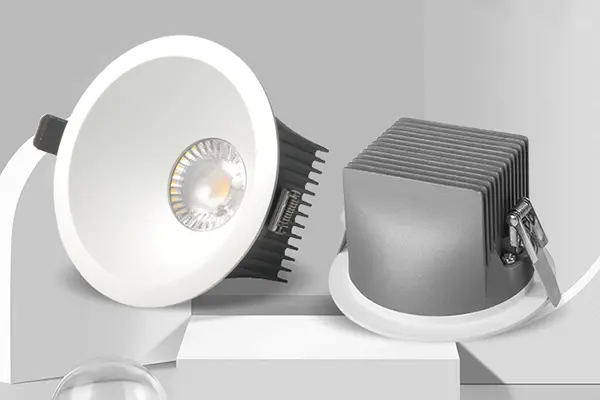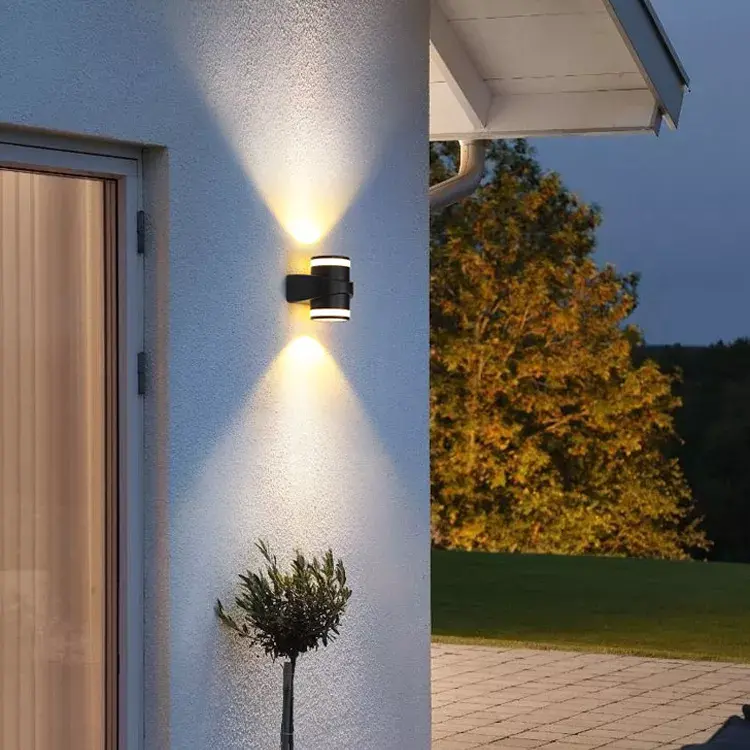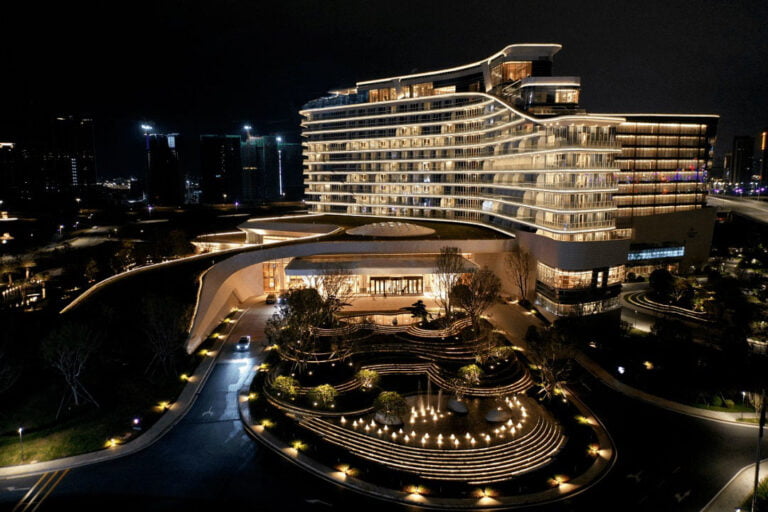Lighting a new build offers the unique opportunity to transform a blank canvas into an inspiring, tailored environment that aligns with a client’s vision. With the right approach, lighting can elevate both the interior and exterior of a new property, creating a dynamic and harmonious living experience. In this guide, we delve into effective lighting strategies for new builds, covering everything from planning and design to execution and troubleshooting.
Designing the lighting for a new build involves more than just illuminating spaces—it’s about enhancing architecture, defining moods, and creating experiences. As lighting professionals, our mission is to merge functionality with aesthetics, ensuring that each lighting element complements the architecture and meets the unique needs of the occupants.
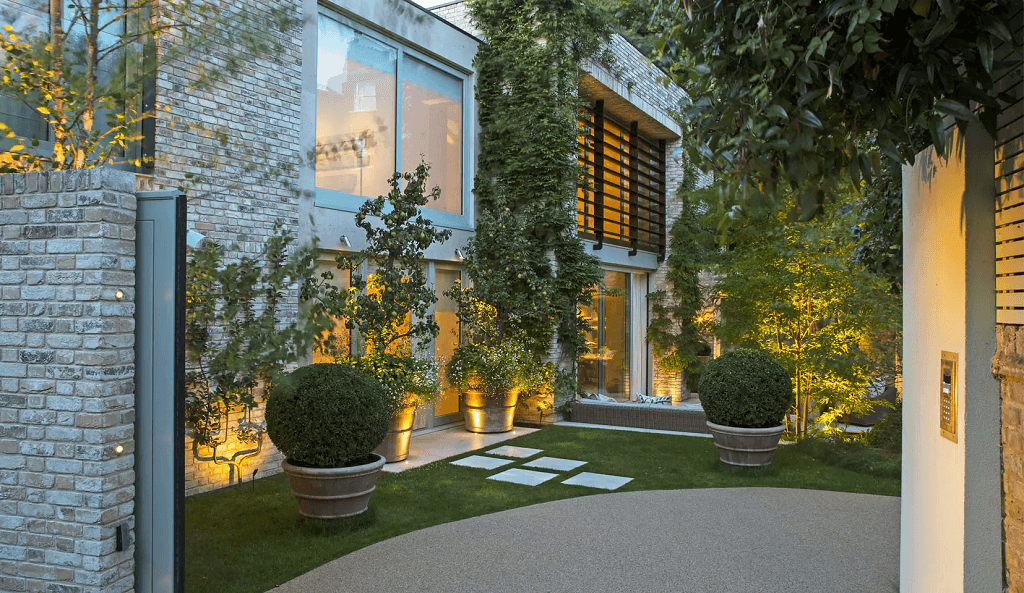
Planning Lighting for New Builds
Understanding Client Needs
The foundation of an exceptional lighting design lies in understanding the client’s lifestyle, preferences, and the specific uses of each space. This involves asking questions like:
- How will each room be used throughout the day?
- What is the desired ambiance for different times of day or occasions?
- Are there specific features or artworks they wish to highlight?
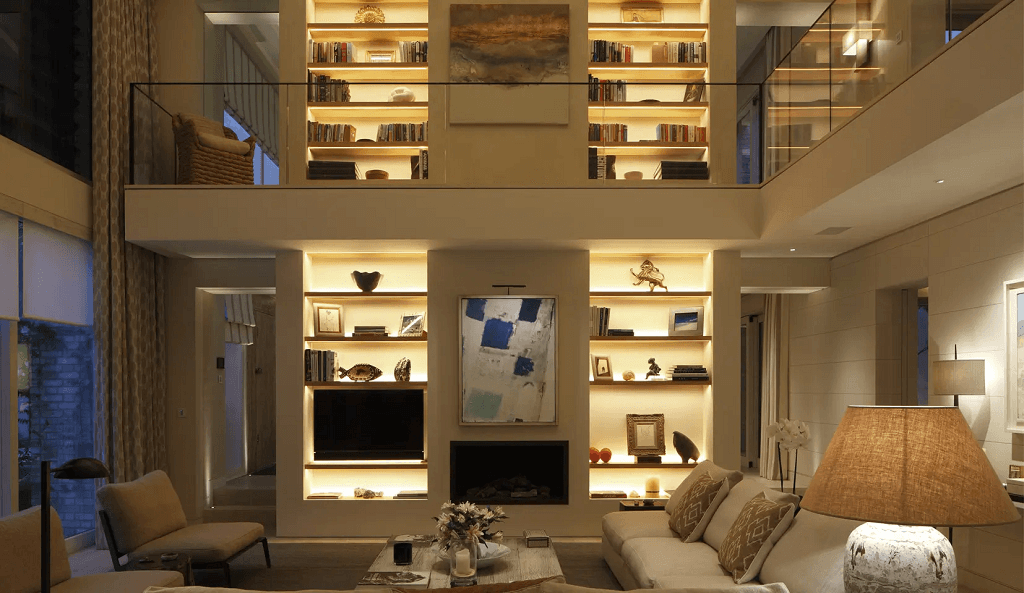
Analyzing Room Dimensions and Natural Light
Accurate measurements of room dimensions, ceiling heights, and window placements are crucial to designing a cohesive lighting scheme. Natural light plays a significant role in determining the placement and intensity of artificial lighting:
- Daylight Analysis: Assess how natural light interacts with each room during different times of the day.
- Open-Plan Spaces: Design flexible lighting solutions that can adapt to the varying needs of interconnected areas like living rooms, kitchens, and dining spaces.
The Role of Surface Finishes
Different materials reflect or absorb light in unique ways. Understanding the finishes used in the interiors—whether they are marble, wood, metal, or fabric—can help in selecting appropriate lighting fixtures that will enhance the space:
- Reflective Surfaces: Use soft, diffused lighting to avoid glare.
- Absorptive Materials: Increase the intensity of lighting to compensate for the reduced reflection.
Wiring and Control Systems
Integrating a well-planned control system is essential for modern new builds, enabling seamless management of various lighting scenarios:
- Smart Lighting Controls: Consider implementing systems that allow control of lighting, blinds, and other home automation features from a central panel.
- Wiring Layouts: Ensure that all electrical wiring schemes are planned early to avoid costly changes during the construction phase.
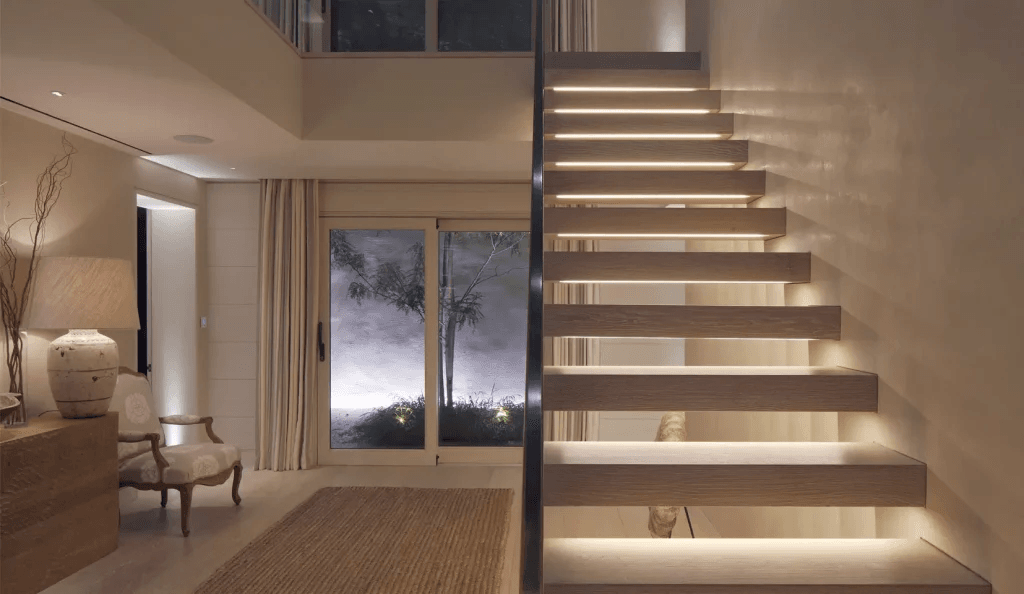
Combining Decorative and Architectural Lighting
Layering Lighting Elements
A well-designed lighting scheme incorporates multiple layers to achieve depth and balance:
- Low-Level Lighting: Floor-level lights for pathways and stairs.
- Mid-Level Lighting: Table lamps and shelf lighting for task-specific illumination.
- High-Level Lighting: Downlights, chandeliers, and architectural lights to highlight features and artworks.
Creating Atmosphere with Lighting
The ambiance of each space can be tailored using a mix of decorative and architectural lighting. The goal is to create a warm and inviting atmosphere, especially during evenings:
- Evening Light Sources: Utilize table lamps and decorative wall lights to establish a cozy feel.
- Accent Lighting: Focus on key elements like artworks, fireplaces, or coffee tables for a balanced visual impact.
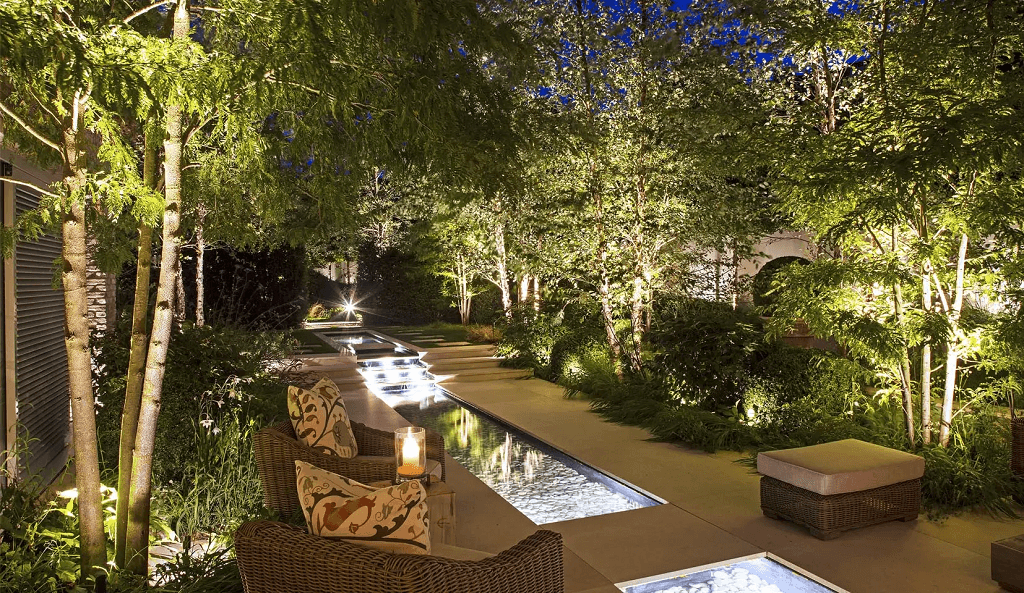
Challenges in Lighting New Builds
Decision-Making Complexity
Designing a lighting plan for a new build involves countless decisions, from fixture types to control systems. To streamline this process:
- 3D Visualizations: Offer walk-through visualizations to help clients visualize the lighting scheme.
- Mood Boards: Use mood images to convey the intended lighting atmosphere.
Working with Glazed Structures
Large-scale glazing in modern new builds can be both a feature and a challenge. Lighting strategies should address the reflective and transparent qualities of glass to prevent dark spots or glare:
- Triple-Height Spaces: Fill vertical spaces with layered lighting to create a sense of warmth and depth.
- Exterior Integration: Ensure that exterior lighting complements the glazed views from within the house.
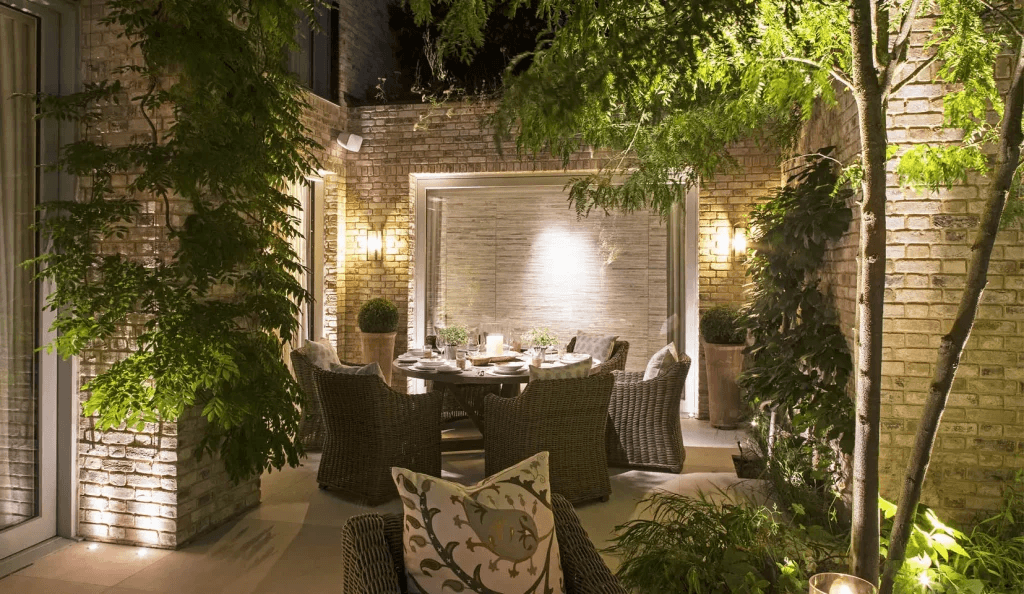
Exterior Lighting for New Builds
Task and Landscape Lighting
Effective exterior lighting not only enhances security but also adds to the visual appeal of the property:
- Pathway Lighting: Illuminate walkways and entrances to ensure safe access.
- Soft Landscape Lighting: Use low-level lights to accentuate garden features and create a seamless connection between indoor and outdoor spaces.
Highlighting Garden Features
Illuminate key landscape elements like trees, water features, and sculptures to add depth and drama to the garden:
- Tree Uplighting: Cast light upwards to highlight the structure and texture of large trees.
- Water Features: Use submersible lights to bring out the movement and sparkle of fountains or ponds.
Differences Between New Builds and Renovations
New builds provide greater flexibility for lighting design compared to renovations, where existing structures might limit options:
- Unrestricted Design: New builds allow for innovative lighting solutions without the constraints of preserving architectural elements.
- Integrated Control Systems: Seamlessly incorporate advanced control systems that may not be feasible in older properties.
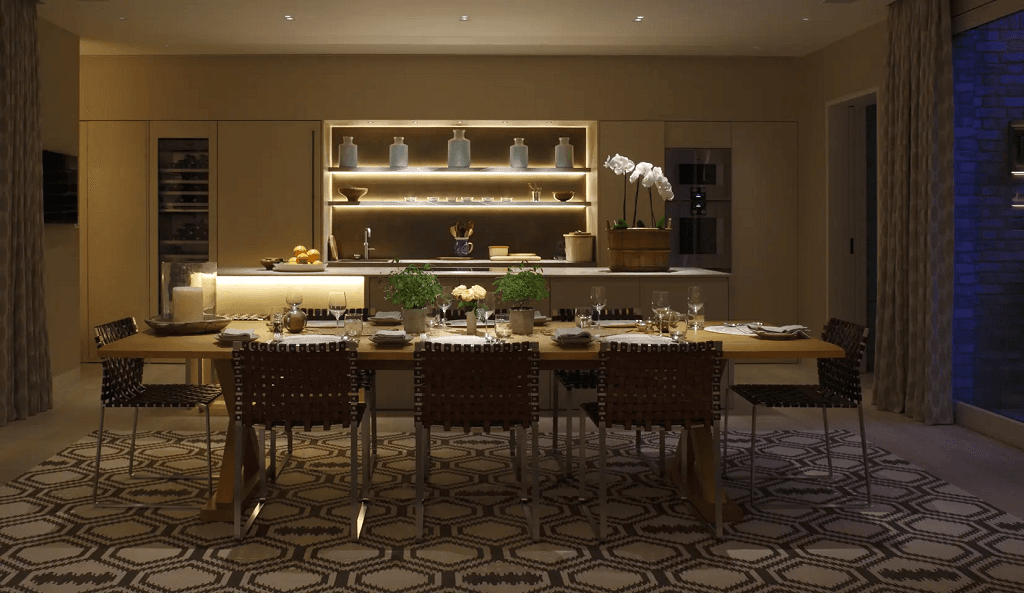
Timing for Lighting Design in New Builds
Engaging in lighting design from the earliest stages of planning ensures that the final scheme is both functional and visually stunning. Early coordination with architects and interior designers helps integrate the lighting seamlessly with the overall design vision.
The key to successful lighting in a new build is to approach it as an integral part of the overall design, rather than a mere afterthought. By blending decorative elements with architectural lighting, considering client preferences, and addressing challenges with innovative solutions, we can transform any space into a beautifully illuminated environment that enhances both functionality and aesthetics.


